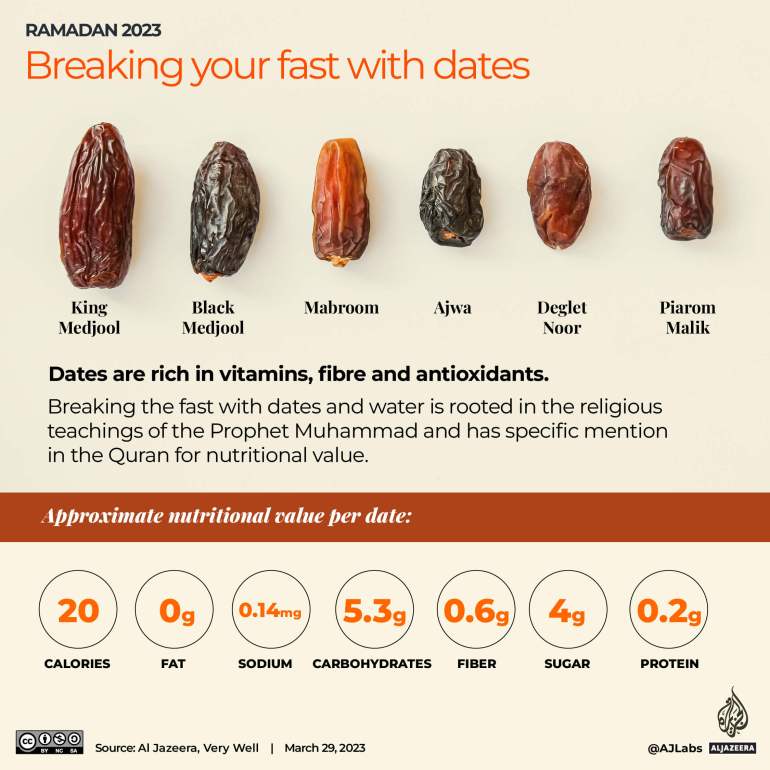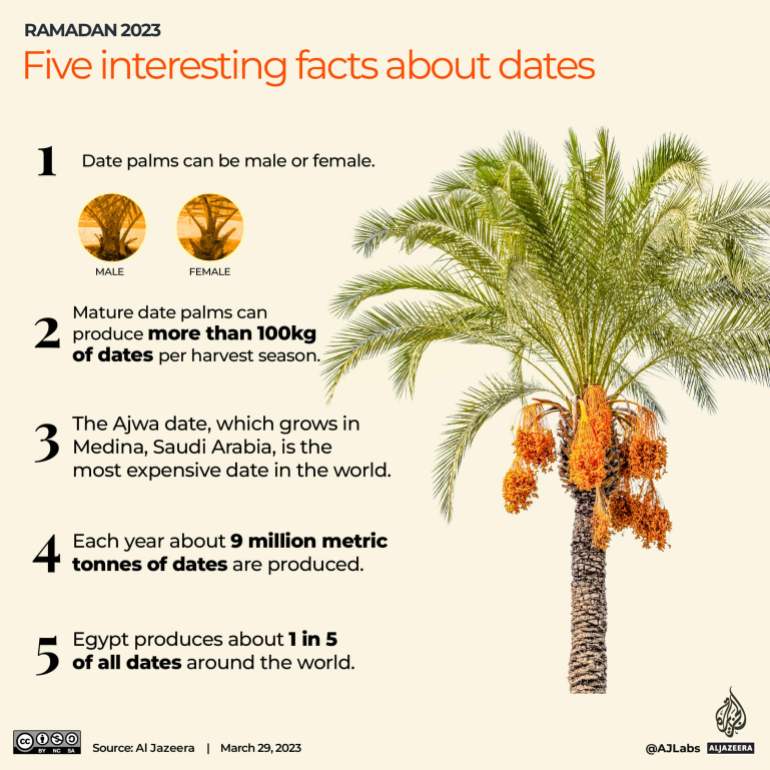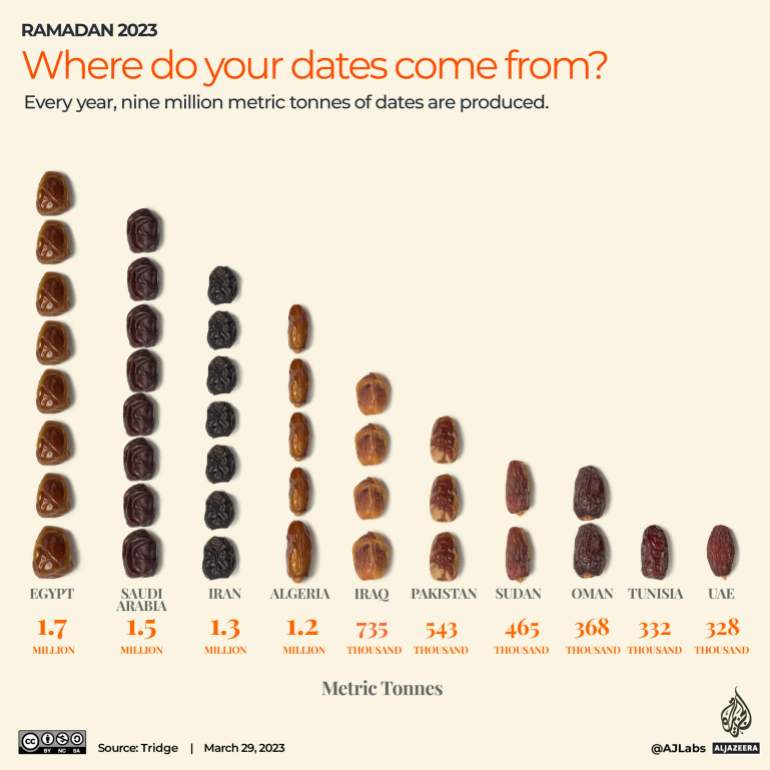Ramadan 2023: Where do your dates come from? | Infographic News
Egypt, Saudi Arabia and Iran produce half of the world’s dates.
As the sun goes down during the Muslim holy month of Ramadan, many Muslims will reach for a date, a sweet brown fruit, to break their fasts.
During these 29 or 30 days, able-bodied, observant Muslims abstain from eating, drinking, smoking and sexual relations during daylight hours to achieve greater “taqwa”, or consciousness of God.
Breaking one’s fast with dates and water is rooted in the religious teachings of the Prophet Muhammad and has a specific mention in the Quran for its nutritional value.

Dates, fresh or dried, contain important vitamins, minerals and fibre. They are also high in antioxidants, which protect the body from several diseases.
Given their high level of fructose, a natural sugar found in fruit, dates are a great source of energy, especially after a long day’s fast.
There are many different varieties of dates, each with different tastes and textures.
Medjool: Known for their large size, sweet taste, amber colour, and richness in flavour.
Mabroom: Known for their elongated shape, reddish-brown hue and chewiness, and are less sweet than other kinds of dates.
Ajwa: Among the dates most revered by Muslims around the world as they are grown in Medina, they have a soft, fleshy, almost juicy feel and are very sweet tasting.
Deglet Noor: Medium-sized, lighter in colour, and ideal for cooking and baking.
Piarom: Darker skin, rich flavour, slightly drier and known for their unique taste.
Interesting facts about dates
Dates have been cultivated for thousands of years. Date palm trees are either male or female, with only the female plant producing fruit.
A mature date palm can produce more than 100kg (220 pounds) of dates per harvest season – about 10,000 dates.
The Ajwa date, which grows in Medina, Saudi Arabia, is the most expensive in the world.

Top producers of dates
Every year, nine million metric tonnes of dates are produced, according to Tridge, a food and agriculture database.
Dates tend to thrive in countries with long, hot summers like those in the Middle East and neighbouring regions.
Egypt is the world’s top date supplier, producing nearly one in five, or 18 percent, of the world’s dates.
Saudi Arabia follows at nearly 17 percent, with Iran rounding off the top three at 14 percent.
The infographic below shows where most of the world’s dates come from:





